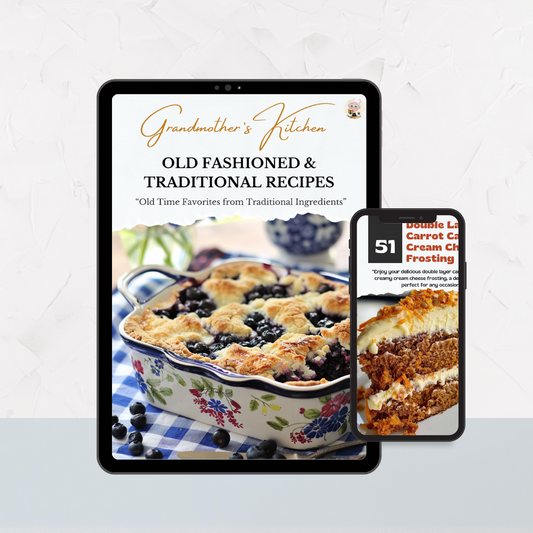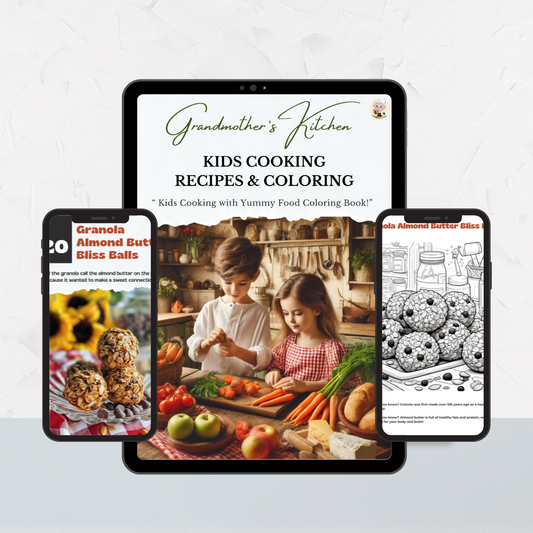How to Freeze Fruit: Step-by-Step Guide to Preserving Flavor and Nutrients

Share
How to Freeze Fruit to Preserve It: A Step-by-Step Guide
Growing up, I watched my mother freeze fruits every summer, turning our kitchen into a colorful hub of activity. Now, it's a tradition I've carried on in my own home. There's something deeply satisfying about filling the freezer with nature's bounty, knowing that come winter, I can enjoy the taste of ripe summer fruits. Freezing fruits not only saves money, but it also helps reduce waste and ensures that I have a stash of healthy ingredients ready for smoothies, baking, or just a quick snack. Plus, there’s a certain magic in pulling out a bag of perfectly preserved strawberries or peaches in the middle of winter, instantly transporting me back to those warm, sunny days. Here’s how you can do it too, keeping your freezer stocked with all the best flavors of the season.
Did You Know?
Freezing fruit is a method that has been used for centuries to preserve seasonal produce. It allows you to enjoy summer’s bounty all year round without the need for added preservatives. Interestingly, frozen fruits can sometimes have more vitamins and antioxidants than fresh fruits that have been stored for a long period because freezing locks in nutrients at their peak ripeness.
Types of Fruits and Preparation
Berries (Strawberries, Blueberries, Raspberries, Blackberries)
Wash and Dry: Rinse berries gently under cold water and spread them on a clean towel to dry completely.
Freeze on a Tray: Place the berries in a single layer on a baking tray lined with parchment paper. Freeze until solid.
Transfer to Bags: Transfer the frozen berries to airtight freezer bags or containers. Remove as much air as possible before sealing.
Stone Fruits (Peaches, Plums, Apricots)
Wash and Slice: Wash, peel (if desired), and slice the fruits.
Prevent Browning: Toss slices with a bit of lemon juice to prevent browning.
Freeze on a Tray: Lay the slices on a parchment-lined tray and freeze until solid.
Transfer to Bags: Transfer the slices to freezer bags or containers, removing as much air as possible before sealing.
Apples and Pears
Wash and Slice: Wash, peel, core, and slice the fruits.
Prevent Browning: Toss slices with lemon juice or an ascorbic acid solution.
Blanch (Optional): Blanch slices in boiling water for 2 minutes, then cool in ice water.
Freeze on a Tray: Lay the slices on a parchment-lined tray and freeze until solid.
Transfer to Bags: Transfer to freezer bags or containers, removing as much air as possible before sealing.
Bananas
Peel and Slice: Peel bananas and slice them into rounds.
Freeze on a Tray: Lay the slices on a parchment-lined tray and freeze until solid.
Transfer to Bags: Transfer the banana slices to freezer bags or containers, removing as much air as possible before sealing.
Avocados
Peel and Mash: Peel and pit avocados, then mash them with a bit of lemon or lime juice to prevent browning.
Portion and Freeze: Portion the mashed avocado into ice cube trays or small containers and freeze until solid.
Transfer to Bags: Transfer the frozen avocado portions to freezer bags, removing as much air as possible before sealing.
Watermelon
Cut and Portion: Cut watermelon into cubes or balls.
Freeze on a Tray: Lay the pieces on a parchment-lined tray and freeze until solid.
Transfer to Bags: Transfer the frozen watermelon pieces to freezer bags or containers, removing as much air as possible before sealing.
Citrus Fruits (Oranges, Lemons, Limes)
Peel and Segment: Peel and section the fruits, removing all membranes and seeds.
Freeze on a Tray: Lay the segments on a parchment-lined tray and freeze until solid.
Transfer to Bags: Transfer to freezer bags or containers, removing as much air as possible before sealing.
General Tips for Freezing Fruit
Label and Date: Always label your bags or containers with the date of freezing and the type of fruit.
Use Airtight Containers: Use airtight containers or freezer bags to prevent freezer burn.
Proper Storage: Store frozen fruits in the coldest part of your freezer to maintain quality.
Small Proportions: Freeze fruits in small portions to make it easier to use only what you need.
Shelf Life: Most frozen fruits can be stored for up to 8-12 months, but they are best used within 6 months for optimal flavor and texture.
Ways to Use Frozen Fruits
Smoothies and Blender Drinks: Frozen fruits are perfect for smoothies. Simply blend frozen berries, bananas, and a liquid of your choice (milk, juice, or yogurt) for a refreshing drink.
Baking: Use frozen fruits in pies, muffins, and cakes. There’s no need to thaw; just adjust the baking time slightly.
Desserts: Make fruit sorbets by blending frozen fruits with a bit of sugar and lemon juice. Or use frozen fruits as a topping for ice cream and yogurt.
Sauces and Jams: Cook frozen fruits with a bit of sugar to make quick fruit sauces or jams.
Cereals and Oatmeal: Add frozen fruits directly to hot oatmeal or cereals for a burst of flavor and nutrients.
Nutritional Information (General):
Calories: Varies by fruit, typically 40-80 per cup, Protein: 0-1g, Carbohydrates: 10-20g, Fat: 0g, Sugars: 8-15g
Kitchen Tips, Great Ideas, How to Save Money:
Bulk Buying: Purchase fruits in bulk during their peak season when they are cheapest and freeze them for later use. This saves money and ensures you always have high-quality fruit on hand.
Proper Washing: Thoroughly wash all fruits before freezing to remove pesticides and contaminants. Organic fruits are a great option if you are concerned about pesticide residues.
Avoid Clumping: Freezing fruits on a tray before transferring them to bags prevents clumping, making it easier to use only the amount you need.
Use a Straw: Use a straw to suck out excess air from freezer bags if you don’t have a vacuum sealer. This helps prevent freezer burn and maintains fruit quality.
Blanching for Better Texture: Blanching fruits like apples and pears before freezing can help maintain their texture and color.
Versatile Use: Use frozen fruits in smoothies, baking, sauces, or as toppings for cereals and yogurt. They can be used directly from the freezer without thawing.
Freezing Purees: For fruits like bananas or peaches that are often used in pureed form, consider freezing purees in ice cube trays. Once frozen, transfer the cubes to freezer bags.
Optimal Freezing: Ensure your freezer is set to 0°F (-18°C) or lower to maintain the best quality of frozen fruits.
Prevent Ice Crystals: Ensure fruits are dry before freezing to prevent ice crystals from forming, which can affect the texture.
Reuse Containers: Save and reuse containers from store-bought frozen fruits or other foods. Just ensure they are thoroughly cleaned before use.
By following these steps and tips, you can enjoy a wide variety of fruits year-round, preserving their flavor and nutritional benefits. Happy freezing from Grandmother’s Kitchen!


